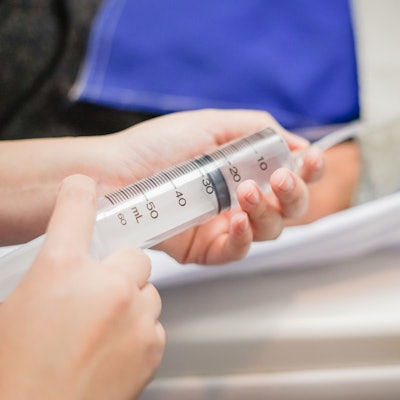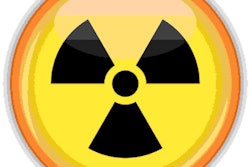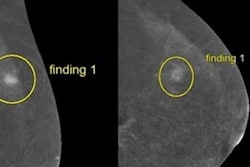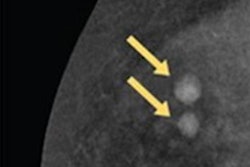
Among other breast imaging modalities, contrast-enhanced digital mammography has the lowest mean glandular dose for all age and compressed breast thickness groups measured in a study published October 22 in Applied Radiation and Isotopes.
Researchers led by Dr. Norhashimah Norsuddin from Universiti Kebangsaan Malaysia also found that the average mean glandular dose value of digital breast tomosynthesis (DBT) was significantly higher than 2D and contrast-enhanced mammographic techniques.
"This provides opportunities for the utilization of contrast-enhanced digital mammography in diagnostic mammography despite different age and compressed breast thickness factors," Norsuddin and colleagues wrote.
Mammography has evolved in recent decades from screen film to digital. However, digital mammography is not one-size-fits-all and continues to evolve to this day. DBT continues to show promise in detecting more cancers and doing so more accurately than conventional digital mammography. But it also generates a higher radiation dose. Meanwhile, contrast-enhanced mammography has also shown potential to enable more accurate diagnosis of breast cancer.
Mean glandular dose is affected by several factors such as age and compressed breast thickness. Previous studies suggest that variation in radiation dose from every procedure is a key point for consideration during risk assessment for radiation-induced breast cancer. However, the authors pointed out that these studies were primarily performed on phantom models.
Norsuddin et al wanted to compare the mean glandular dose across 2D, DBT, and contrast-enhanced mammographic techniques across different age groups and compressed breast thickness measures. They included 650 women in their study.
They found that the contrast-enhanced technique had the lowest mean glandular dose but also found an inverse correlation between age and mean glandular dose for all mammographic techniques.
| Comparison of mean glandular dose in mammographic techniques and correlation with age and compression breast thickness | |||
| 2D mammography | DBT | Contrast-enhanced digital mammography | |
| Average mean glandular dose | 1.54 | 1.81 | 0.87 |
| Correlation between age and mean glandular dose | r = -0.412 | r = -0.167 | r = -0.259 |
| Correlation between compression breast thickness and mean glandular dose | r = 0.705 | r = 0.912 | r = 0.698 |
The researchers also found significant changes in average mean glandular dose for all three techniques in all age groups measured, which included a range of 40 and under to 70 and older. For compression breast thickness, the team reported significant changes in thickness less than 40 mm, 40 to 50 mm, and greater than 50 mm. However, the authors added that no significant changes were seen when comparing 2D versus contrast-enhanced mammography in compression breast thickness of less than 40 mm.
Contrast-enhanced mammography showed the lowest average mean glandular doses in compression thickness measures under 40 mm (0.44 mGy), 40 to 50 mm (0.62 mGy), and greater than 50 mm (1.04 mGy). DBT meanwhile had the highest average mean glandular doses across all three thickness categories when compared to 2D and contrast-enhanced mammography.
The authors suggested that these results may be due to the significant change of breast composition over age, with younger women having dense breast composition with glandular tissues that can absorb a higher dose.
"Additionally, the decrease in breast density might be due to the natural decline of estrogen and menopause when age increases," they wrote. "When the breast density decreases, there is less glandular tissue composited in the breast which leads to lower absorbed dose."




















